具体描述
内容简介
对于汉语语法的专业性研究成果比较多,但是能被专业研究人员和普通大众共同接受的成果并不多,本书在实现研究成果的专业性和普及性方面下了很大的功夫,把许多晦涩的理论性问题以浅显易懂的语言表达出来,抓住了普通读者的眼球,因此具有较大的阅读群体,具有良好的市场预期。
本书共分五编,第一编“总论”,从词汇和句子两个角度,对汉语言的基本语法规则进行了梳理;第二编“结构与成分”,分析了词语的构成形式和语法结构的组织形式与结构意义;第三编“标记与词类”,本编对标记的使用规则和词性规则做了剖析,并对一些词性的特殊用法做了重点的论述;第四编“功能范畴”,划分了句式的形式,分析了句式的具体内容;第五编“运作原理”,从语法结构的合成性质入手,总结了语法的规律和例外。此外,在书尾还罗列了所参考的中英文文献,从而提升了本书的学术品味,本书对语言学爱好者和研究者具有较好的参考价值。
目录
第一编 总论
第一章 绪论
第二章 基本语序与语法特征
第三章 句子组织信息的原则
第四章 有标记结构与无标记结构
第五章 句法结构与词汇标记
第六章 词法与句法
第二编 结构与成分
第一章 双宾结构
第二章 动补结构
第三章 特殊动补结构带宾语
第四章 被动式
第五章 处置式
第六章 构形重叠
第七章 肯定结构与否定结构
第八章 语法结构之间的功能交叉
第九章 结构与意义的匹配类型
第十章 语法结构的意义与功能
第十一章 主语与话题之别
第十二章 宾语标记
第十三章 状语的分布
第三编 标记与词类
第一章 否定标记
第二章 羡余否定
第三章 体标记
第四章 将来时
第五章 名词化
第六章 动词的概念化方式对语法的影响
第七章 介词与动词
第八章 助动词
第九章 形容词的数量特征与句法
第十章 形容词的有标记与无标记
第十一章 “有”的程度用法
第十二章 指示代词与结构助词
第十三章 疑问代词与疑问语气词
第十四章 形状量词
第十五章 程度词
第十六章 结构助词“的”
第四编 功能范畴
第一章 肯定与否定的规律
第二章 数范畴与有定范畴
第三章 限定动词与非限定动词
第四章 判断、焦点、强调与对比
第五章 疑问与焦点
第六章 疑问与感叹
第七章 小称与儿化
第八章 陈述句与虚拟句
第五编 运作原理
参考文献
精彩书摘
《汉语语法》:
6.3.4 形容词复合词的内部构造对其语法功能的影响
汉语的典型形容词的语法特点包括:(1)可以受程度词“很”修饰;(2)可以被“不”否定;(3)可以重叠;(4)可以用于比较句。但是,不同类型的复合形容词在这些语法特点上差别很大。下面按照复合形容词的结构类型来分别加以讨论。
(a)并列式复合形容词。例如:“干净、漂亮、轻松、平安、安静、安稳、白净、诚恳、粗糙、大方、恩爱、方正、干脆、孤单、恭敬、模糊、零星”等。
(b)偏正式复合形容词。例如:“雪白、墨黑、笔直、梆硬、碧绿、冰冷、滚热、金黄、精瘦、死硬、通红、稀烂、鲜红”等。
(c)主谓式复合形容词。例如:“年轻、性急、胆小、肉麻、面熟、理亏、眼花”等。
(d)动宾式复合形容词。例如:“失望、缺德、吃力、到家、得意、知己、耐烦、怄气、入味、守旧、有限”等。
(e)后缀形容词。例如:“热乎乎、软和和、暖融融、胖墩墩、平展展、气鼓鼓、美滋滋、慢悠悠、亮晶晶、金灿灿、蓝莹莹、红彤彤、干巴巴”等。
一、重叠的限制。双音节形容词具有AABB的重叠式,但是只限于并列式复合形容词一种,比如“千干净净”、“漂漂亮亮”、“大大方方”等。其他类型的形容词都不能采用这种重叠形式。
同时,只有偏正式的形容词才可以采用ABAB重叠式,比如“雪白雪白”、“笔直笔直”、“梆硬梆硬”等。其他类型的形容词都不能采用这种重叠形式。
二、否定的限制。上述的偏正式和后缀形容词都不能加“不”否定,比如不能说“不雪白”、“不笔直”、“不暖融融”、“不干巴巴”等。
三、受程度词修饰的限制。上述的偏正式和后缀形容词都不能受程度词“很”等修饰,比如不能说“很雪白”、“很笔直”、“很暖融融”、“很干巴巴”等。
四、用于比较句的限制。上述的偏正式和后缀形容词都不能用于比较结构,例如:
这条马路比那条马路笔直。
这件衬衫比那件衬衫雪白。
这间屋子比那间屋子暖融融。
这篇文章比那篇文章干巴巴。
6.3.5 其他词类的复合词
汉语的副词、介词和连词也有部分是复合词,但是它们的内部构造与其句法表现之间没有什么相互制约关系。这跟这些词类的语法功能比较单纯有关。副词是专门修饰动词的,介词是专门引进名词的,连词是专门连接单句的,即这些词类的功能专一,它们也就不可能因为内部的构造而影响其句法行为。
……
前言/序言
想写一本汉语语法书,是我二十年来的一个夙愿。高中时候看过一本语法书,懵懵懂懂,莫名其妙。大学时又学现代汉语,语法部分语焉不详、枯燥乏味,且不知其所用。研究生时期主攻语法,常听国内、国外学术圈中之人说,汉语没有严格的语法,是种落后语言云云。国内一些学人在作研究时又不自觉地把印欧语言作为标准,结果得出“汉语缺乏这个缺乏那个”的结论。每每念起这些,常自感慨:汉语缺乏规律乎?抑或没有找到规律乎?纵观历史,横看世界,汉语所承载的中华上下五千年的灿烂文化无与伦比,作为这一优秀民族世世代代智慧结晶的语言,难道会独落人后吗?因此我那时就深信汉语中蕴涵严格的规律,立志以揭示其中和谐的美为己任。探讨语言规律需要两个条件,一是要有科学的思维训练,二是对语言作广泛的调查。所以我二十年来不敢懈怠,孜孜不倦,心无旁鹜,现把自己的研究作一总结,呈现给读者。这样做一方面是为了及时得到读者的反馈,使自己以后的研究作得更好;另一方面也是向人们展示汉语中壮丽的景观,虽然我们的工作仅仅是揭开它的美丽的一角,但已经令人美不胜收、目不暇接,同时也借以增加我们对自己母语的热爱,吸引更多的同道加入探索汉语规律的行列。
学界内外有两个流传颇广而且对汉语伤害甚大的观点:一是上述的“汉语是一种缺乏形态的语言”,二是“汉语的语法灵活多变”。“缺乏”二字是带贬义的,是指“应该有而没有”。圈内人士尚持这种观点,也就无怪乎外行人对汉语的偏见和误解了,因此就有人认为汉语是一种不发达的语言,期待着汉语有朝一日也发展出丰富的形态。其实这是一种既不切实际又违背科学的态度。人类语言的语法手段是丰富多彩的,没有一种手段是存在于所有语言之中的,也没有任何类型的手段可以用来衡量一种语言的发达程度。不同语言采用不同的标记方式,在很大程度上是由其句子的基本语序决定的,也受该语言系统的其他因素的制约。“灵活多变”看似一个褒义词,实际上也给汉语带来了很多负面的影响:如果一个研究者接受这一观点,就不会努力去探索语法中的规律,因为就如同一堆词在那里自由碰撞组合一样,也探讨不出什么名堂来;如果一个学习者接受这一观点,就不会努力去学习汉语语法,因为反正是自由碰撞,不用学就会,又因为组合太自由,学也学不会。其实这只是反映了汉语研究的初级阶段所给予人们的一种表面观察,当看到那扑朔迷离、变化莫测的现象而又找不到背后的规律的时候,就误以为汉语就是这个样子了。其实,汉语是充分利用语序变化这一手段来表达丰富而精细的语法意义的,语序的变化受严格的语法规律的制约。通过我们的研究,世人也可以了解到汉语什么也不缺乏,而是存在着严谨和谐的规律的。
语法系统之庞大,现象之丰庶,远远超出常人的想象,一个人虽穷毕生之精力,也只能窥其端倪。要真正全面揭示一个语法系统的全貌,不是个人的能力所能胜任的,甚至也不是一代人所能成就的。任何专著都只能是在某个方面、从一定程度上对一种语法的刻画。我们已有的研究成果自身有一定的系统性,但是跟实际语言相比,也只能是局部的。我们今天的研究跟已有的研究之间,不是替代关系,而是互补关系,因此相互参照着学习,更有益处。前人已经描写很清楚的地方,我们并不采取求全的态度而加以重复叙述。本书中的内容也不是对其他学者最新研究的简单综述,即使有借用他人之处,也是在我们独立调查研究的基础上加以消化、取舍的。
《汉语语法》 一、 汉语语法:探寻语言的奥秘,构建思维的桥梁 在浩瀚的语言星河中,汉语以其悠久的历史、独特的魅力和庞大的使用者群体, Occupies a conspicuous position. It is not merely a tool for communication, but also a carrier of culture, a reflection of thought, and a window into the soul of a nation. To truly grasp the essence of this ancient language, a deep understanding of its grammatical structure is indispensable. Our book, 《汉语语法》 [Chinese Grammar], is born out of this necessity, aiming to illuminate the intricate workings of Chinese grammar, making it accessible and comprehensible to learners of all levels. This book is not a dry recitation of rules, nor an abstract theoretical treatise. Instead, it embarks on a journey of exploration, guiding readers through the fascinating landscape of Chinese grammar with clarity, logic, and practical examples. We believe that grammar is not a rigid cage, but a dynamic framework that shapes meaning and expresses thought. By understanding this framework, learners can not only communicate more effectively but also develop a deeper appreciation for the nuances and expressiveness of the Chinese language. 二、 结构与内容:由浅入深,层层递进 The organization of 《汉语语法》 [Chinese Grammar] is meticulously designed to facilitate learning. We begin with the fundamental building blocks of the language, gradually progressing to more complex structures and concepts. 1. 语音与文字:语言的基石 Before delving into grammar, it is crucial to establish a solid foundation in the phonetic system and the writing system of Chinese. 汉语拼音系统 (Hanyu Pinyin System): We will introduce the complete set of Pinyin initials, finals, and tones, along with their correct pronunciation. Understanding tones is paramount in Chinese, as they can alter the meaning of words entirely. We will provide ample practice exercises and audio resources to help learners master the subtle differences in tone. 汉字 (Chinese Characters): The beauty and complexity of Chinese characters deserve careful attention. We will explore the basic stroke order, radicals, and the fundamental principles of character composition. While a full mastery of character writing is a lifelong pursuit, this section aims to equip learners with the essential knowledge to recognize, understand, and begin to write common characters, thus demystifying the visual aspect of the language. 2. 词类:语言的构成单位 Once the phonetic and written foundations are laid, we move on to the diverse array of word classes in Chinese. Each word class possesses unique grammatical properties and functions within a sentence. 名词 (Nouns): We will explore different types of nouns, including common nouns, proper nouns, abstract nouns, and concrete nouns. The concept of measure words (量词), a distinctive feature of Chinese, will be thoroughly explained with numerous examples and practical usage scenarios. 动词 (Verbs): Verbs are the engines of sentences, conveying action and state. This section will cover various categories of verbs, including action verbs, stative verbs, and linking verbs. Special attention will be paid to verb aspects (时态), such as the perfective aspect (了), the progressive aspect (着, 在), and the experiential aspect (过), which are crucial for conveying the temporal dimension of actions. 形容词 (Adjectives): Adjectives add color and description to nouns. We will examine their placement in sentences, their use in comparative and superlative structures, and their ability to function as adverbs. 副词 (Adverbs): Adverbs modify verbs, adjectives, or other adverbs, providing information about time, place, manner, degree, and more. Their versatile roles and common patterns of usage will be elucidated. 代词 (Pronouns): Pronouns serve as substitutes for nouns, preventing repetition and improving sentence flow. We will cover personal pronouns, demonstrative pronouns, interrogative pronouns, and possessive pronouns, along with their grammatical functions. 介词 (Prepositions): Prepositions introduce prepositional phrases, which often provide additional information about location, time, direction, or manner. Their usage in conjunction with nouns and pronouns to form adverbial or adjectival phrases will be meticulously analyzed. 连词 (Conjunctions): Conjunctions connect words, phrases, or clauses, creating complex sentences and establishing logical relationships between ideas. We will explore coordinating and subordinating conjunctions, highlighting their role in sentence construction. 助词 (Auxiliary Words): Auxiliary words, such as structural particles (的, 地, 得) and modal particles (了, 吗, 呢, 吧), play a vital role in conveying grammatical relationships and nuances in meaning. Their specific functions and correct application will be a key focus. 叹词 (Interjections): Interjections express sudden emotions or exclamations. While less central to sentence structure, understanding their usage contributes to natural communication. 3. 句子结构:语言的骨架 Once the individual word classes are understood, we move on to how they are assembled into meaningful sentences. 基本句子结构 (Basic Sentence Structures): We will begin with the most fundamental sentence patterns, such as Subject-Verb (SV), Subject-Verb-Object (SVO), and Subject-Adjective (SAdj). The roles of subject, predicate, and object will be clearly defined. 句子成分 (Sentence Components): Beyond the core components, we will examine other important sentence elements like complements (补语), which provide additional information about the result, degree, or extent of an action, and adverbials (状语), which modify the verb or adjective. 特殊句式 (Special Sentence Patterns): Chinese boasts several distinctive sentence structures that deviate from the basic patterns. These include: 把字句 (Bǎ Sentences): Sentences using the particle "把" to bring the object forward, emphasizing the disposal or effect of the action on the object. 被字句 (Bèi Sentences): Passive voice sentences using the particle "被" to indicate that the subject is the recipient of the action. 存现句 (Existence Sentences): Sentences that indicate the existence or appearance of something, often using "有" or specific location words. 判断句 (Identifying Sentences): Sentences that identify one entity as another, typically using "是". 疑问句 (Interrogative Sentences): We will cover various question forms, including particle questions (吗), interrogative pronoun questions (谁, 什么, 哪里), and alternative questions (还是). 否定句 (Negative Sentences): The use of negative particles like "不" and "没" will be thoroughly explained, including their specific contexts and nuances. 4. 词组与从句:拓展表达的维度 Building upon sentence structures, we will explore how words and phrases combine to form more complex grammatical units. 名词性词组 (Noun Phrases): The formation and function of noun phrases, including those modified by adjectives, determiners, and relative clauses, will be detailed. 动词性词组 (Verb Phrases): The composition of verb phrases, including verb-object combinations and verb phrases with complements, will be analyzed. 介词性词组 (Prepositional Phrases): Their structure and role in modifying other sentence elements will be elaborated. 从句 (Clauses): While Chinese grammar does not employ relative clauses in the same way as many Western languages, we will explore how phrases and specific structures can function similarly to embed information and create subordinate relationships, effectively expanding the expressive capabilities of sentences. 5. 语篇与语用:语言在实际运用中的魅力 Beyond the structural aspects, a comprehensive understanding of grammar also involves how language is used in real-world contexts. 语序 (Word Order): The importance of word order in Chinese for conveying meaning and emphasis will be highlighted throughout the book. 语体风格 (Stylistic Variations): We will touch upon how grammatical choices can influence the formality and tone of communication, from everyday conversations to more formal writing. 语用原则 (Pragmatic Principles): The book will implicitly guide learners towards understanding how context, speaker intention, and listener interpretation interact with grammatical structures to create meaning. 三、 学习方法与特色:助你轻松掌握汉语语法 《汉语语法》 [Chinese Grammar] is designed with the learner at its core, incorporating pedagogical features to ensure effective and engaging learning. 丰富的实例 (Abundant Examples): Every grammatical concept is illustrated with numerous, clear, and relevant examples drawn from authentic Chinese usage. These examples are carefully selected to showcase the practical application of rules in everyday communication. 循序渐进的练习 (Gradual Exercises): Following each section, a variety of exercises are provided, ranging from simple fill-in-the-blanks and sentence completion to more challenging sentence construction and translation tasks. These exercises are designed to reinforce understanding and build confidence. 清晰的解释 (Clear Explanations): Grammatical rules are explained in a straightforward and accessible manner, avoiding jargon where possible. Complex concepts are broken down into manageable parts, ensuring that learners are not overwhelmed. 对比与辨析 (Comparison and Distinction): Where necessary, we will draw comparisons with other languages (particularly English) to highlight unique features of Chinese grammar and to address potential areas of confusion for learners from different linguistic backgrounds. We will also carefully distinguish between similar-sounding or similarly functioning grammatical elements. 注重实际应用 (Emphasis on Practical Application): Our ultimate goal is to equip learners with the ability to use Chinese grammar effectively in real-life situations. Therefore, the focus is always on practical communication rather than purely theoretical knowledge. 易于查阅的设计 (Easy-to-Reference Design): The book's structure, with clear headings and subheadings, along with a comprehensive index, makes it an excellent reference tool that learners can return to whenever they encounter grammatical difficulties. 四、 目标读者:开启你的汉语学习之旅 This book is an indispensable resource for a wide range of learners: 初学者 (Beginners): Those new to the Chinese language will find a solid and systematic introduction to its grammatical foundations. 进阶学习者 (Intermediate Learners): Learners who have a basic understanding of Chinese will benefit from a more in-depth exploration of complex grammatical structures and nuances. 汉语教师 (Chinese Language Teachers): This book serves as a valuable teaching aid, providing clear explanations and a wealth of examples for classroom instruction. 对中国语言文化感兴趣者 (Those Interested in Chinese Language and Culture): Anyone seeking to understand the structural beauty and expressive power of the Chinese language will find this book to be an enlightening guide. 《汉语语法》 [Chinese Grammar] is more than just a textbook; it is a companion on your journey to mastering the Chinese language. By unraveling the intricacies of its grammar, you will unlock a deeper understanding of Chinese communication, culture, and thought. We invite you to embark on this enriching exploration with us.
![汉语语法 [Chinese Grammar]](https://pic.tinynews.org/12116935/597b136fN31d9ee49.jpg)


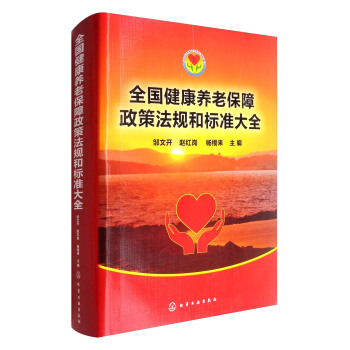
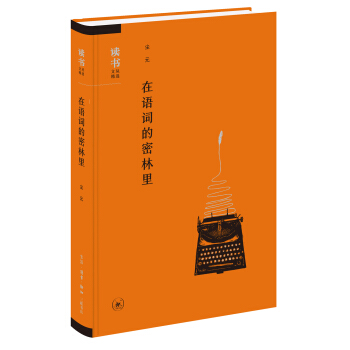


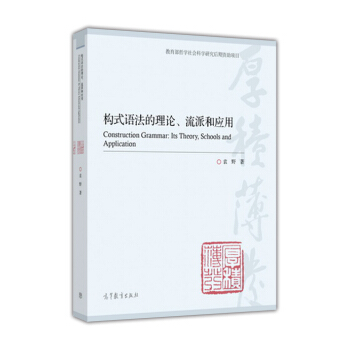
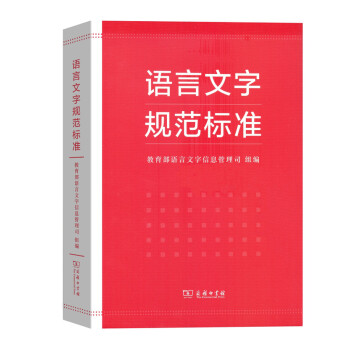
![区域互动视角下的中国污染排放与环境治理研究 [Research on Pollution Emission and Environmental Governance in China from the Perspective of regional Interaction] pdf epub mobi 电子书 下载](https://pic.tinynews.org/12119443/598312b8N118d4c34.jpg)
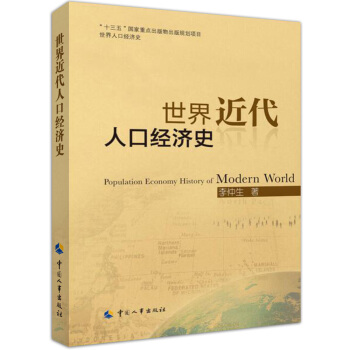










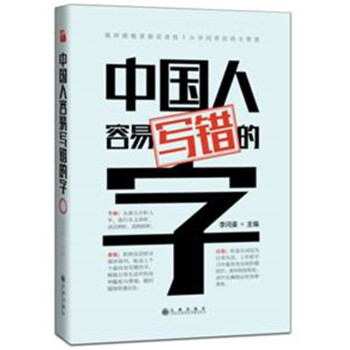
![改革政府:企业家精神如何改革着公共部门 [Reinventing Government] pdf epub mobi 电子书 下载](https://pic.tinynews.org/12122406/59197b1cNf6428d0c.jpg)